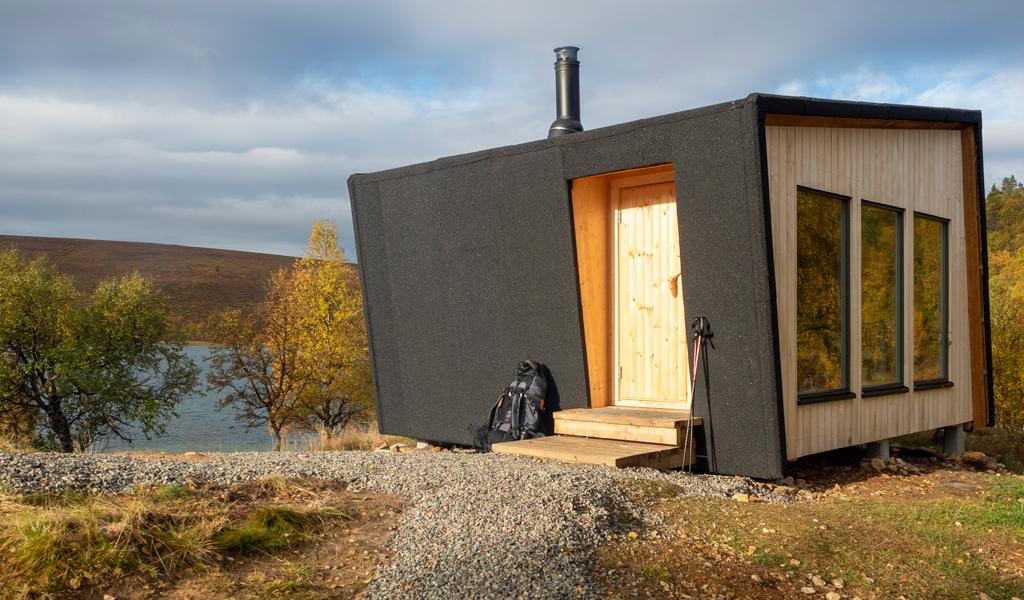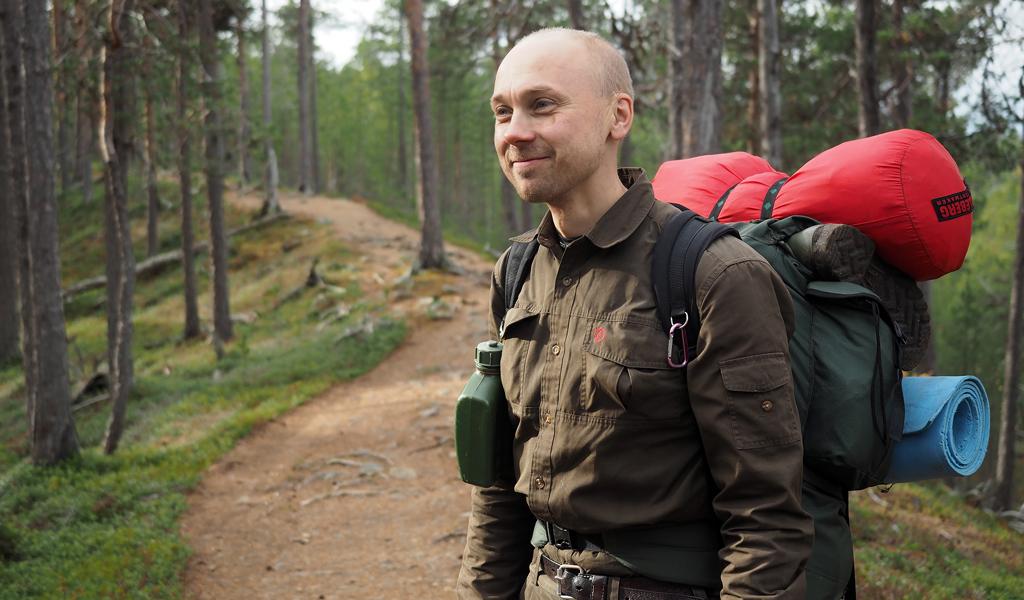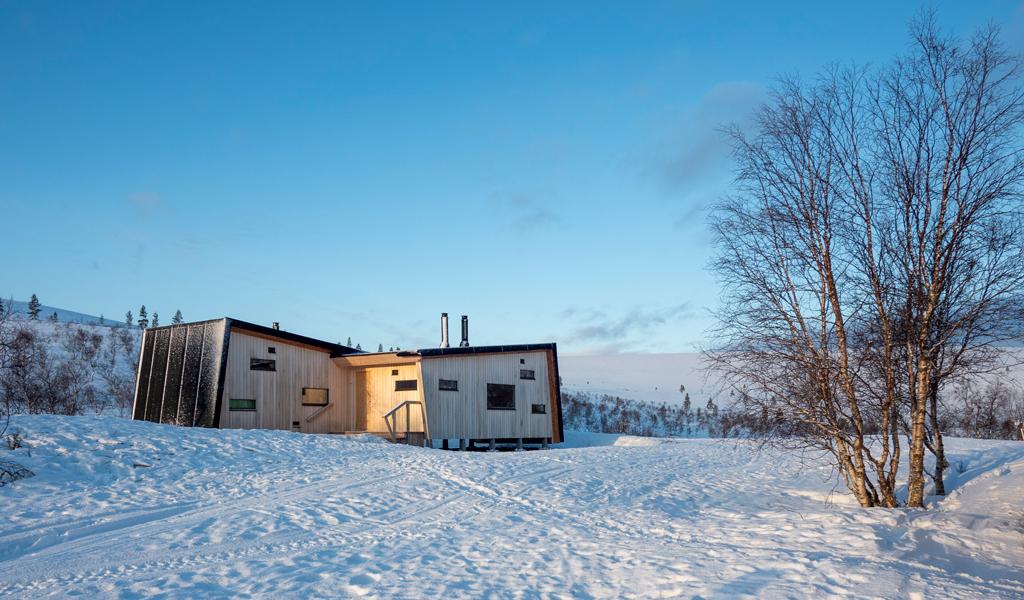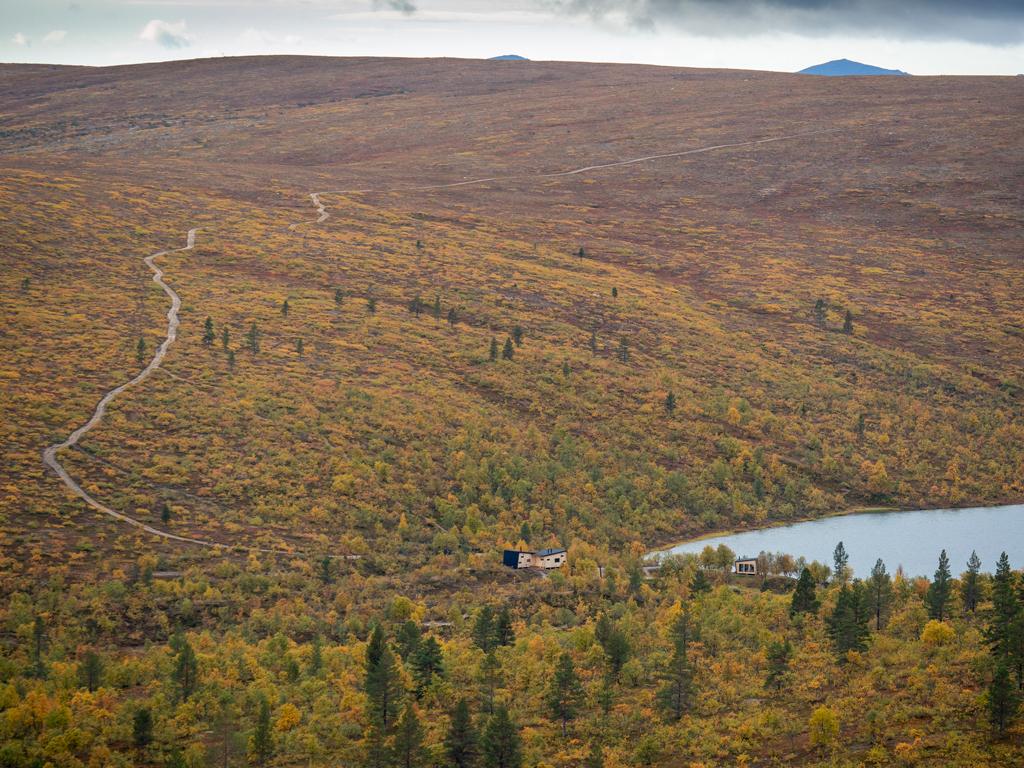Manu Humppi: “The new generation of hikers appreciates a new kind of approach to the design of wilderness huts”
For the love of hiking Camping has grown in popularity in recent years. The increased popularity has also increased interest in wilderness huts and other hiking structures. As a passionate wilderness enthusiast, I have been lucky to have been able to design accommodation facilities used by hikers. My interest in hiking structures dates to my […]

For the love of hiking
Camping has grown in popularity in recent years. The increased popularity has also increased interest in wilderness huts and other hiking structures. As a passionate wilderness enthusiast, I have been lucky to have been able to design accommodation facilities used by hikers.
My interest in hiking structures dates to my student days. The research for my thesis eventually resulted in a non-fiction book’s worth of material, which was published under the title Kammit ja autiotuvat – the cultural heritage of Lapland. The popularity of the book also brought to my desk the design projects of wilderness huts and shelters, where I have been able to utilize my experiences both as an architect and as a wilderness enthusiast.
The most visible project in recent years has been the wilderness hut built in Rautulampi in Urho Kekkonen National Park. The complex, built to replace the hut destroyed in the fire. The project includes an open and a reservation hut, a day hut and a shed building with toilets and storage space for firewood. We have also commissioned the structures of Salla’s new national park, some of which have already been designed.
Next, my colleague and I are working on the new structures to be designed for Metsähallitus which runs the maintenance of national parks in Finland and their services for hikers. There is a need to renew the hiking structures all over Finland’s national parks.

A wilderness hut is a unique challenge for a designer.
Huts and other wilderness shelters are built in sensitive places, usually in nature conservation areas. Therefore, planning always starts with adaptation to the environment. The designer is forced to ensure that the construction process and the finished hut respect the surrounding nature.
Working in nature creates its own framework conditions for practical building solutions. The transport of building materials and construction work must be planned carefully because it is not possible to arrange normal site conditions in the wilderness. Transporting materials, tools and labour into the wilderness is a significant expense, and the budgets in these projects are not exceptionally large. For example, cross-laminated (CLT) wooden elements were used in the Rautulampi huts to make it as easy and as quick as possible to erect the huts on site. The material is durable and dense, which also keeps maintenance costs low.

The huts are put to the test in the wilderness. The weather conditions in Finnish nature vary from snow falling in front of the cottage door to scorching heat, and the huts must last almost maintenance-free from season and year to year. This excludes, for example, the use of paints and treatment agents that require regular maintenance.
Visitors to the huts bring their own challenges to the design. The designer’s personal experience as a user of wilderness huts is useful here. For example, paying attention to fire safety and the durability of materials ensures that the hut will be preserved for future generations of hikers. However, functionality must not take precedence over appearance: the goal is a building that ages beautifully as part of the landscape.

Space for people, also in nature
Every building that humans bring into the wilderness has a significant impact on the environment. Therefore, it is important that the design is done with both users and nature in mind. There has often not been room for an architect in these small-scale projects, but the involvement of a construction professional ensures a result that serves all parties.
Read more
Shopping center Pasaati: versatile and long-term design work
Shopping center Pasaati in the center of Kotka has been serving its customers for almost 20 years. We continue to act as the design partner of the shopping center and ensure that the facilities adapt to the changing needs of stores and customers.
Shopping center Pasaati: versatile and long-term design workUser-centric Concept Design supports investment in the renewal of business premises.
Over the decades, our customer’s premises have undergone a major transformation from a slaughterhouse to office space. Despite several renovations, the premises no longer serve the needs of its users and the changing working life. Our user-oriented study project provided design guides and budget calculations for three different design options.
User-centric Concept Design supports investment in the renewal of business premises.Laitila Architects helps Hyphen localise their designs for Finnish environment
Our localisation services helped global architecture firm Hyphen provide their American client with designs that suit the Finnish climate and comply with local legislation.
Laitila Architects helps Hyphen localise their designs for Finnish environment